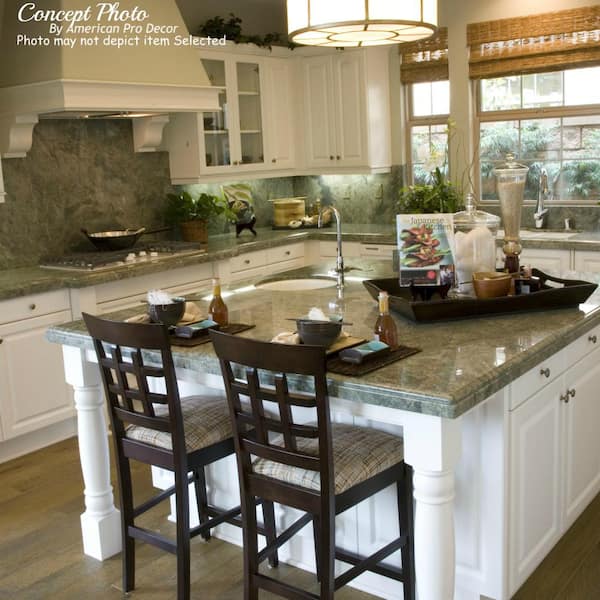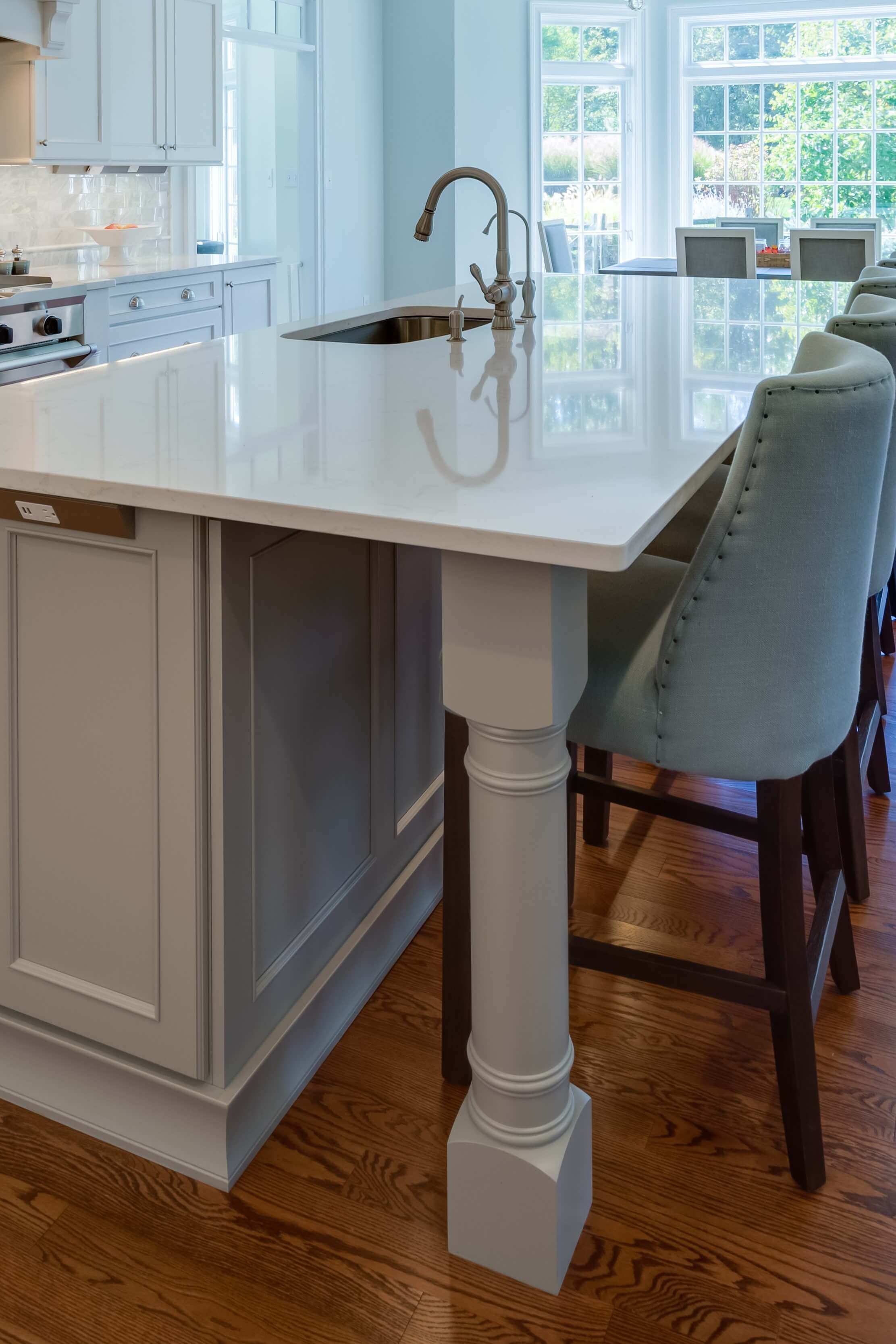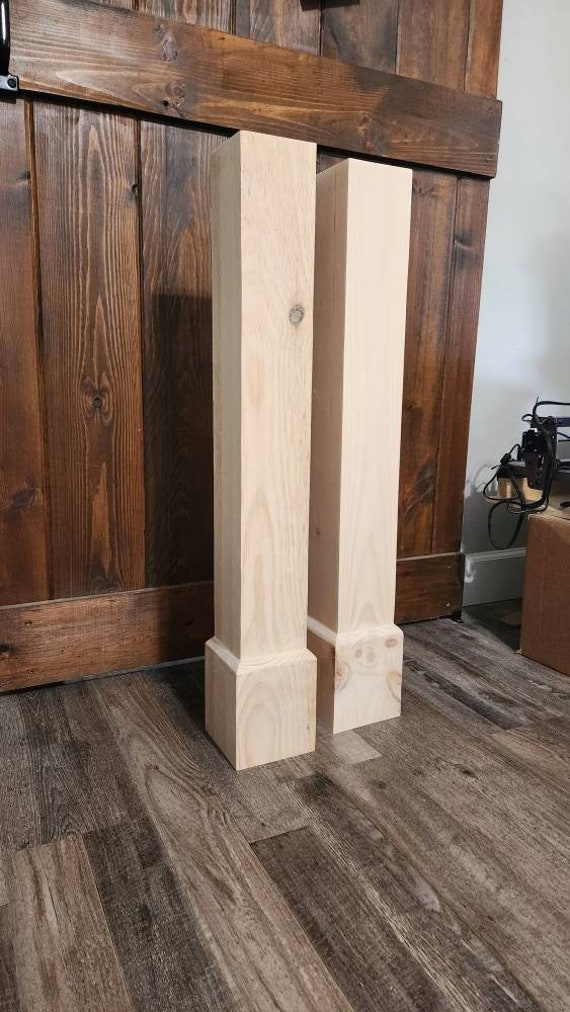Fashionable Kitchen Island Leg Concepts to Boost Your Kitchen Decoration
Fashionable Kitchen Island Leg Concepts to Boost Your Kitchen Decoration
Blog Article
The Value of a Sturdy Cooking Area Island Leg in Creating a Practical Cooking Area
A strong kitchen area island leg serves as a basic part in establishing a useful food preparation atmosphere, providing necessary support for both the countertop and numerous cooking area activities. As kitchens evolve right into multifunctional areas for cooking, eating, and mingling, the selection of products and layout factors to consider for island legs comes to be progressively vital.
Advantages of Sturdy Island Legs
Supplying necessary assistance, sturdy kitchen island legs play a critical role in improving the performance and longevity of kitchen islands - kitchen island leg. These legs not just bear the weight of the counter top and any additional things put on the island, yet also contribute to the general stability of the framework. A well-supported kitchen area island guarantees that it stays functional and upright, even under heavy usage, which is specifically crucial in active kitchen area environments
Furthermore, sturdy island legs can boost the visual charm of the cooking area. They provide a solid framework that can complement numerous style styles, from contemporary to typical. This convenience permits home owners to customize their cooking area islands according to personal preference while ensuring that the structural stability stays uncompromised.
Along with their helpful role, robust kitchen area island legs can additionally enhance security. A steady island minimizes the danger of crashes triggered by tottering or tipping, which is particularly crucial in homes with youngsters or senior individuals. Additionally, solid legs can help with a seamless flow of activities, allowing for efficient meal preparation and social interactions within the cooking area area. Inevitably, investing in tough cooking area island legs is necessary for a useful and visually pleasing cooking area.
Materials for Cooking Area Island Legs
When choosing materials for kitchen area island legs, durability and aesthetic charm are critical variables to consider,. One of the most usual materials consist of wood, steel, and engineered wood, each offering one-of-a-kind advantages.
Hardwood, such as cherry, oak, or maple, is a classic selection as a result of its stamina and timeless appeal (kitchen island leg). It can withstand substantial weight and is immune to wear, making it ideal for high-use kitchen atmospheres. Furthermore, wood can be discolored or repainted to match different kitchen styles
Steel legs, commonly crafted from stainless-steel or functioned iron, supply a commercial and modern-day appearance. They are extremely solid and can support considerable lots while being resistant to dampness and warm, which is advantageous in a cooking area. Metal legs can also be conveniently cleansed, enhancing their practicality.

Design Considerations for Security
The choice of products for kitchen island legs straight influences the design considerations for stability. When making a cooking area island, it is vital to assess the weight-bearing capability of the selected materials. Much heavier materials, such as strong timber or steel, normally supply higher stability, especially under the anxiety of everyday usage.
Furthermore, the leg layout must incorporate appropriate geometry to improve stability. A bigger base enhances the assistance area, minimizing the threat of tipping or tottering. Consideration needs to also be offered to the elevation of the legs; disproportionate leg lengths can bring about inequality, jeopardizing the total stability of the island.
In addition, the circulation of weight across the island is essential. Making sure that the leg placement lines up with the heaviest components, such as appliances and kitchen counters, will further improve security.
Maintenance Tips for Durability

Cleansing is another critical aspect of maintenance. Relying on the material of the Web Site legs-- whether timber, steel, or composite-- proper cleansing approaches must be used. For wooden legs, a gentle wipe with an ideal timber and a damp fabric cleaner will assist preserve their finish. Metal legs may need a light gloss to avoid rust and preserve their appeal.
Additionally, tightening up screws and screws on a regular basis can ensure stability and prevent tottering. Think about strengthening the legs with additional braces or supports to improve durability if the kitchen island experiences hefty usage. Lastly, applying a safety surface or sealer can safeguard against dampness and spots, extending the life expectancy of the legs. By adhering to these maintenance tips, home owners can ensure their kitchen area island legs stay useful and durable for several years to come.
Choosing the Right Leg Style
Regular maintenance ensures that cooking area island legs remain functional and tough, but selecting the right leg design is just as essential for both looks and assistance. The option of leg style can significantly influence the general layout and harmony of your cooking area.

Performance is another crucial aspect. Thicker legs or those with a tough base can sustain much heavier counter tops and tools, boosting the island's utility. Conversely, slender legs may create an airy look, appropriate for lighter designs but potentially less supportive.
Conclusion
In recap, the importance of durable kitchen area island legs can not be overstated in the creation of a practical cooking location. These legs give crucial support, improve stability, and contribute to the general aesthetic of the kitchen.
A strong kitchen island leg serves as a fundamental part in developing a useful food preparation environment, supplying needed assistance for both the kitchen counter and numerous kitchen area activities.Offering essential assistance, tough kitchen area island read legs play a critical function in boosting the performance and toughness of kitchen islands. Eventually, investing in durable kitchen island legs is necessary for a practical and aesthetically pleasing cooking location.
Factor to consider must additionally be given Check This Out to the elevation of the legs; out of proportion leg sizes can lead to inequality, jeopardizing the general stability of the island.
Wooden legs offer warmth and a classic look, while metal legs use a modern and industrial feel.
Report this page